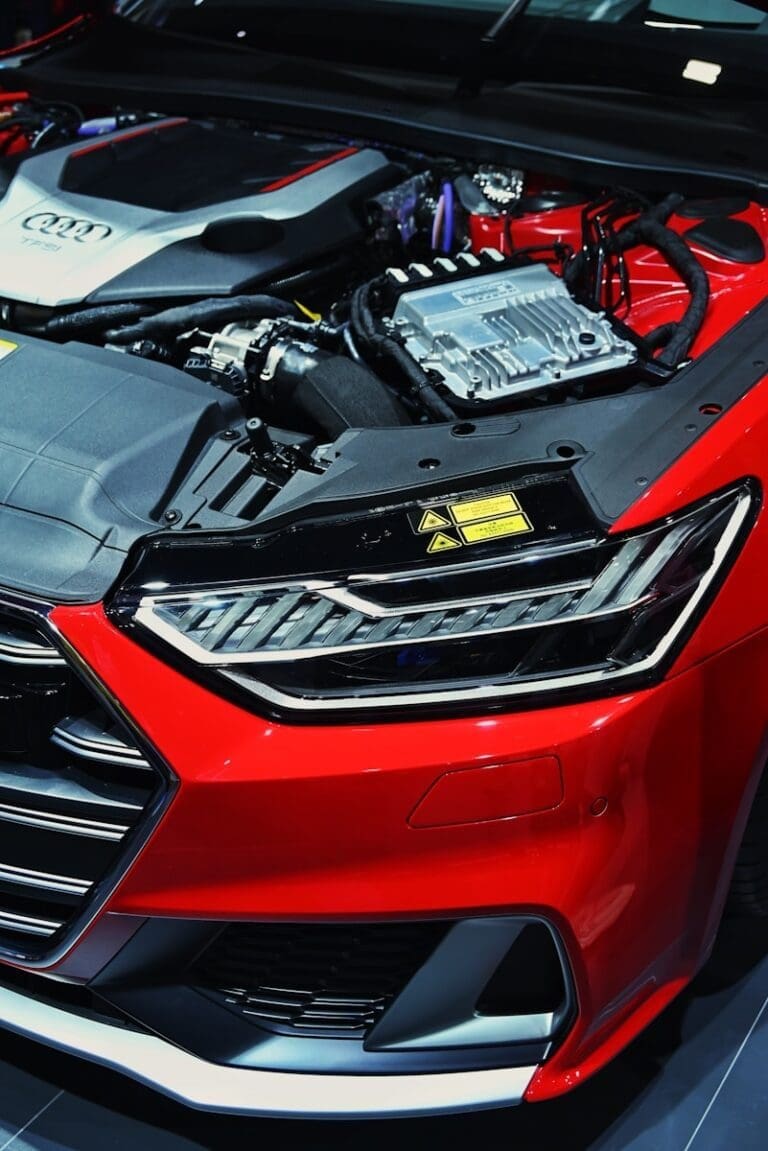The Diesel Particulate Filter (DPF) is a crucial component of modern diesel engines, designed to reduce harmful emissions by capturing and storing soot produced during combustion. While it plays a key role in reducing pollution, the DPF can become problematic for vehicle owners, particularly when it becomes clogged or fails. This has led many to consider removing the DPF altogether to avoid frequent issues. But one critical question arises: Is it illegal to remove the DPF?
In this comprehensive guide, we’ll explore the legality of DPF removal, the reasons why some people opt for DPF delete, the risks involved, and potential alternatives for resolving DPF-related issues.
What is a DPF?
Before we dive into the legalities, it’s important to understand what a DPF is and how it functions. A Diesel Particulate Filter (DPF) is a component of the exhaust system in diesel vehicles. Its primary function is to capture and store particulate matter (soot) from the exhaust gases to reduce the number of harmful emissions released into the atmosphere.
Over time, these particles build up inside the filter, and the DPF periodically goes through a process called regeneration, where the accumulated soot is burned off at high temperatures. However, in certain situations—such as when a vehicle is mainly driven on short trips or at low speeds—the regeneration process may not occur effectively, leading to blockages in the filter.
Why Do People Remove the DPF?
While the DPF is essential for keeping diesel emissions within legal limits, it can cause several issues for vehicle owners:
Clogging and Blockages: If a DPF becomes clogged and cannot regenerate properly, it can lead to reduced engine performance, increased fuel consumption, and even expensive repairs. The most common DPF blockage symptoms include warning lights on the dashboard, poor fuel efficiency, and reduced power output.
Costly Repairs: When a DPF becomes too clogged, it may need to be professionally cleaned or replaced, which can be a costly process. Replacing a DPF can range anywhere from £1,000 to £3,000, depending on the vehicle. These high costs often lead vehicle owners to consider DPF removal.
Fuel Efficiency: The regeneration process can sometimes increase fuel consumption. Some drivers believe that removing the DPF can improve fuel efficiency and reduce the need for repairs.
Due to these reasons, some vehicle owners consider a DPF delete, which involves removing the filter and reprogramming the engine’s ECU to prevent warning lights and error codes from appearing.
Is it Illegal to Remove the DPF?
The short answer is: Yes, it is illegal to remove the DPF in many countries, including the UK and across Europe.
Here are the key points regarding the legality of DPF removal:
UK Law on DPF Removal: In the UK, it is illegal to drive a vehicle that has had its DPF removed. The Road Vehicles (Construction and Use) Regulations make it clear that a vehicle’s exhaust system must meet emissions standards. Removing the DPF means the vehicle no longer complies with these regulations. If caught, drivers can face significant fines and may be ordered to reinstall the DPF to make the vehicle roadworthy again.
MOT Failure: In the UK, vehicles are subject to an annual MOT test, which checks roadworthiness and emissions compliance. A vehicle that has had its DPF removed will likely fail the MOT test, meaning it cannot be legally driven on the road. Since 2014, the MOT test includes an inspection to ensure that the DPF is still fitted to any diesel vehicle that was originally equipped with one.
European Regulations: Across Europe, similar rules apply. EU regulations require diesel vehicles to meet stringent emissions standards, and removing the DPF is a clear violation of these laws. Vehicles that don’t comply may face fines or even be banned from use in certain areas, particularly in cities with low-emission zones.
Environmental Impact: Removing a DPF drastically increases the amount of particulate matter emitted by the vehicle, contributing to air pollution. Many cities are cracking down on high-emission vehicles to reduce smog and protect public health. Removing a DPF not only poses a legal risk but also increases the environmental impact of the vehicle.
What Are the Risks of DPF Removal?
In addition to the legal risks, removing a DPF can have other significant consequences:
Fines and Penalties: If caught driving a vehicle without a DPF, you could face fines and other penalties. In the UK, fines can reach up to £1,000 for a car and £2,500 for a van. Additionally, if your vehicle fails the MOT test due to DPF removal, you’ll need to cover the costs of reinstalling the filter to get your vehicle back on the road legally.
Insurance Issues: Removing the DPF may also invalidate your vehicle insurance policy. Insurers expect vehicles to comply with all legal requirements, including emissions standards. If you make modifications like a DPF delete, your insurer may refuse to cover you in the event of an accident or other claims.
Resale Value: Removing the DPF can significantly decrease the resale value of your vehicle. Most buyers will be wary of purchasing a vehicle with a DPF delete, knowing that it won’t pass an MOT and may result in future fines or repair costs.
Health and Environmental Concerns: The DPF plays an essential role in reducing harmful emissions. Without it, your vehicle will emit more particulate matter, which can contribute to air pollution and health problems such as respiratory issues.
Alternatives to DPF Removal
Given the legal and environmental risks, it’s clear that removing the DPF is not a viable solution for most vehicle owners. Fortunately, there are alternatives to DPF removal that can help address the issues associated with clogged or malfunctioning filters.
DPF Cleaning: A common solution to DPF fault symptoms is professional DPF cleaning. This involves removing the filter and cleaning out the accumulated soot and ash, restoring it to full functionality. Regular DPF cleaning can help prevent blockages and keep your vehicle running efficiently.
DPF Regeneration: If your vehicle is showing DPF blockage symptoms, it may need a forced regeneration. This process burns off the soot and ash buildup by running the engine at higher temperatures for an extended period. Many garages offer this service to help unclog the DPF without needing to replace it.
DPF Replacement: While costly, replacing a failing DPF with a new one ensures that your vehicle remains compliant with emissions standards and avoids future legal issues. Replacing a DPF may be necessary if the filter is damaged or cannot be effectively cleaned.
Driving Habits: If you frequently drive short distances or at low speeds, your DPF may not regenerate properly, leading to blockages. Adjusting your driving habits by taking longer journeys or driving at higher speeds occasionally can help the DPF regenerate and reduce the likelihood of problems.
FAQs
FAQ 1: Is DPF Removal Illegal in the UK?
Table of Contents
ToggleQuestion: Is DPF removal illegal in the UK?
Answer: Yes, DPF removal is illegal in the UK. It’s against the Road Traffic Act 1988 and the Environmental Protection Regulations. Removing or disabling your DPF is a criminal offense that can result in fines up to £40,000, vehicle impoundment, and even prosecution. Additionally, your vehicle will fail its MOT test if the DPF is removed or disabled.
FAQ 2: What Are the Penalties for DPF Removal?
Question: What are the penalties for illegal DPF removal in the UK?
Answer: The penalties for DPF removal are severe: fines up to £40,000, up to 12 months imprisonment, vehicle impoundment, MOT failure, and a criminal record. Additionally, your insurance may be invalidated, and you could face prosecution under environmental laws. Police can stop and inspect your vehicle at any time, and roadside checks are becoming more common.
FAQ 3: Will My Car Fail MOT with DPF Removed?
Question: Will my car fail MOT if the DPF is removed?
Answer: Yes, your car will automatically fail its MOT if the DPF is removed or disabled. MOT testers use diagnostic equipment to detect DPF removal, and failure is instant. Even if the warning light is hidden or the system is bypassed, modern MOT equipment can identify tampering. This is one of the easiest ways to get caught.
FAQ 4: Can I Get a DPF Delete Without Getting Caught?
Question: Can I remove my DPF without getting caught?
Answer: No. Modern vehicles have multiple sensors that monitor DPF function, and removal triggers warning lights that are detectable during MOT tests and police roadside checks. Additionally, many remapping companies now use software that logs DPF deletions, making it traceable. The risk of prosecution, fines, and vehicle impoundment far outweighs any perceived benefit. Legal alternatives like DPF cleaning are safer and more cost-effective.
FAQ 5: What Are Legal Alternatives to DPF Removal?
Question: What are the legal alternatives to DPF removal?
Answer: Legal alternatives include professional DPF cleaning (removes soot buildup without removing the filter), DPF regeneration (active or passive), fuel additives designed for DPF maintenance, and economy remapping (improves fuel efficiency to reduce DPF clogging). These options maintain your vehicle’s emissions compliance, keep your MOT valid, and protect your warranty. Pro Remapping offers all of these legal solutions.
FAQ 6: How Much Does DPF Cleaning Cost vs. Removal?
Question: How much does professional DPF cleaning cost compared to illegal removal?
Answer: Professional DPF cleaning typically costs £300–£800 depending on your vehicle, while illegal DPF removal might seem cheaper upfront. However, removal risks £40,000 in fines, MOT failure, insurance invalidation, and prosecution. DPF cleaning is a one-time investment that keeps your vehicle legal, maintains resale value, and protects you from criminal charges. It’s the smart, cost-effective choice.
FAQ 7: Will DPF Removal Improve My Car’s Performance?
Question: Does removing a DPF improve car performance?
Answer: While DPF removal may provide a slight temporary power increase, the risks far outweigh any gains. Modern remapping technology can safely improve performance through legal economy remaps that optimize fuel efficiency and reduce DPF clogging without removal. These legal alternatives deliver performance gains while keeping your vehicle compliant, maintaining your warranty, and protecting you from prosecution.
FAQ 8: What Should I Do If My DPF Is Faulty?
Question: What should I do if my DPF is faulty or clogged?
Answer: If your DPF warning light is on or your vehicle is showing signs of a faulty DPF (reduced power, poor fuel economy, excessive smoke), contact a professional remapping specialist immediately. Options include professional DPF cleaning, forced regeneration, or replacement. Pro Remapping can diagnose the issue and recommend the best legal solution. Ignoring the problem or attempting removal puts you at serious legal risk.
Conclusion
So, is it illegal to remove the DPF? Yes, it is illegal in most countries, including the UK and across Europe. While removing the DPF might seem like a quick fix to avoid costly repairs, it comes with significant legal, financial, and environmental risks. Instead, consider alternative solutions like DPF cleaning, forced regeneration, or replacement to keep your vehicle compliant with emissions regulations and performing efficiently.
At PRO REMAPPING, we offer expert DPF solutions that can help you resolve any DPF issues without resorting to illegal modifications. Contact us today to learn more about how we can keep your diesel vehicle running smoothly and within the law.
Important Legal Note
Before considering any DPF modifications, it’s crucial to understand the legal implications. Learn why DPF removal is illegal in the UK and what the penalties are. Professional DPF cleaning is a safe, legal alternative that maintains your vehicle’s compliance.



